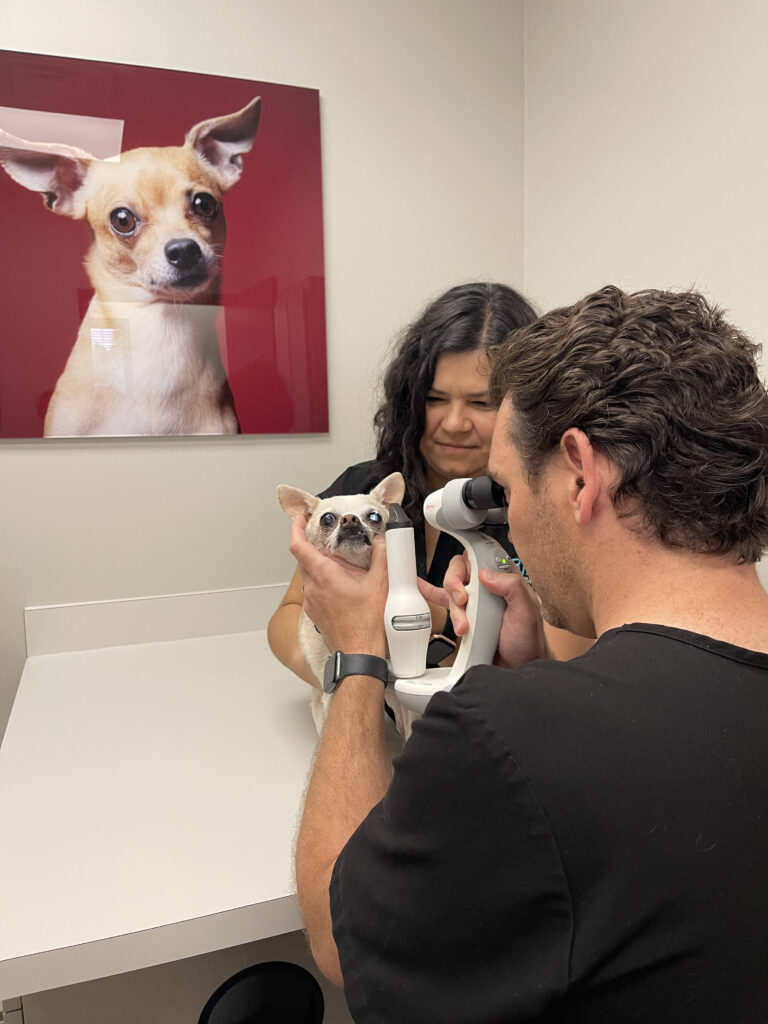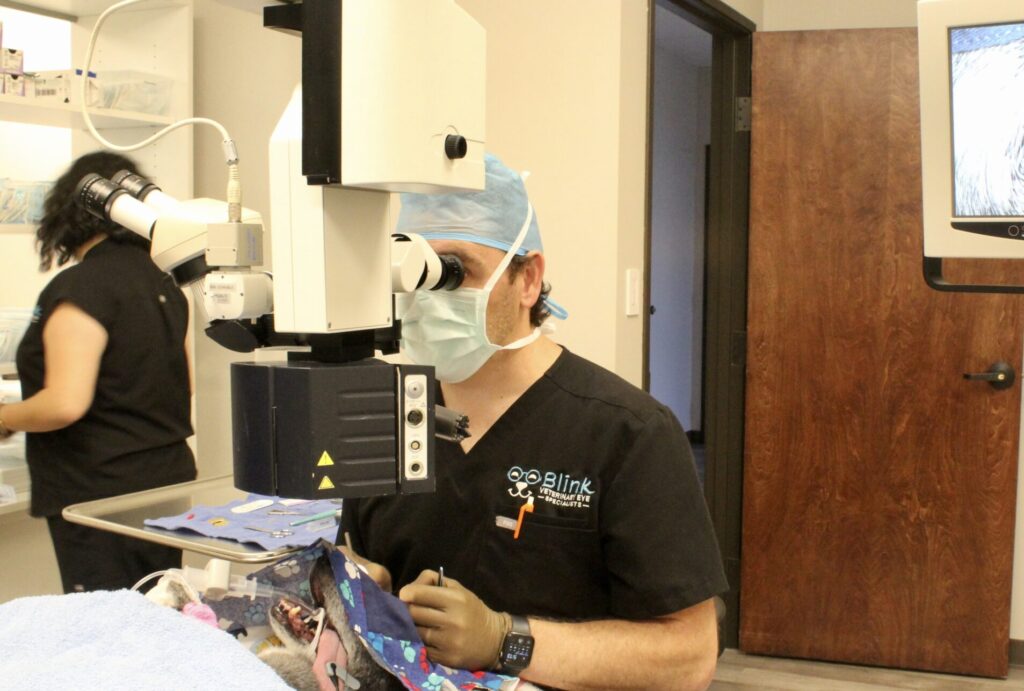At Blink, we provide a full array of leading-edge medical and surgical treatments to preserve and restore vision in dogs and cats. With today’s ophthalmology advances, there are numerous ways to approach your pet’s eye issues—and we always work to find the best solution for you and your pet.

The conditions we see at Blink—and the options for treatment
From routine eye problems to complex ophthalmic diseases and traumatic eye injuries, we see a wide range of conditions that affect animals’ vision. With our specialized training and expertise, we’re able to tailor treatment to your pet’s individual needs:

Eye exams: What to expect
A thorough examination of your pet’s eyes and the surrounding tissue is the essential first step in obtaining an accurate diagnosis and determining appropriate treatment. Here’s what to expect at this initial eye exam at Blink:

The diagnostic resources available at Blink
When you and your primary care veterinarian have questions about your pet’s eyes, we provide timely, accurate answers. We’ve invested in today’s most sophisticated technology for diagnosing eye issues in animals, giving you fast, convenient access to an extensive array of diagnostic capabilities, all in one place:
Combine this advanced technology with the training and experience of our team, and you have access to the highest level of diagnostic expertise, right here in North Texas.

Eye surgery for pets at Blink
Your pet’s eyes are in excellent hands at Blink.
It’s important to know that while Dr. Nettune is a board-certified veterinary eye surgeon, he takes a decidedly conservative approach to performing surgery. In other words, he’ll recommend medical solutions to preserve your pet’s vision and avoid invasive surgery whenever possible and appropriate.
For some conditions, however, surgery is the optimal treatment to restore your pet’s vision and comfort. The conditions for which surgery is most often indicated include:
The equipment we use for eye surgery at Blink
Just as we’ve invested in state-of-the-art diagnostic technology, we’ve also acquired today’s most advanced surgical equipment. This includes:
Directions to Blink Veterinary Eye Specialists:
WAZE, Google Maps, and Apple Maps
**Mapping services do better getting you to our front door if you enter 13621 Inwood Rd, Dallas, TX 75244**
Coming from the North (from Plano, Frisco, Carrollton, The Colony, Prosper, Celina):
Take the Dallas North Tollway heading south and EXIT to Spring Valley. Turn RIGHT at the light onto Spring Valley Rd. At your next light (Inwood Rd), turn LEFT onto Inwood Rd. Continue on Inwood Rd for 0.3 miles until you see Blink on your right. Turn RIGHT into the Blink parking lot. We look forward to seeing you!
OR
If you exit the Dallas North Tollway at Alpha Rd/Galleria Rd - merge onto the Dallas Parkway. You will use the far RIGHT dedicated turning lane to turn right onto Inwood Rd at the first stoplight. Continue on Inwood Rd 0.1 miles until you pass Blink on your left - after passing Blink you will make a U-turn on Inwood to get into the Blink parking lot.
Coming from the South (Dallas, Preston Hollow, Park Cities, Uptown):
Take Dallas North Tollway heading north and EXIT to Spring Valley. Turn LEFT at the light onto Spring Valley Rd. At your next light (Inwood Rd), turn LEFT onto Inwood Rd. Continue on Inwood Rd for 0.3 miles. Turn RIGHT into the Blink parking lot. We look forward to seeing you!
OR
If you exit the Dallas North Tollway at Alpha Rd/Galleria Rd - merge onto the Dallas Parkway. You will turn left at the second light onto Alpha Rd, then make a right at the light for Inwood Rd. Continue on Inwood Rd 0.1 miles until you pass Blink on your left - you will make a U-turn on Inwood Rd to get into the Blink parking lot.
Coming from the East:
Take I-635/Lyndon B Johnson Fwy WEST. Exit 22A Dallas Pkwy/Inwood Rd and continue 0.3 miles. Turn Right onto Dallas Pkwy. Continue straight 0.4 miles on Dallas Parkway North. Turn LEFT onto Alpha Road, then your first Right at the light for Inwood Rd. Continue on Inwood Rd 0.1 miles until you pass Blink on your left - you will make a U-turn on Inwood Rd to get into the Blink parking lot.
Coming from the West:
Take I-635/Lyndon B Johnson Fwy EAST. Exit 22A toward Dallas Pkwy/Inwood Rd. Turn LEFT onto Dallas Parkway. In 0.6 miles turn LEFT at the light onto Alpha Road, then right at the light for Inwood Rd. Continue on Inwood Rd 0.1 miles until you pass Blink on your left - you will make a U-turn on Inwood Rd to get into the Blink parking lot.